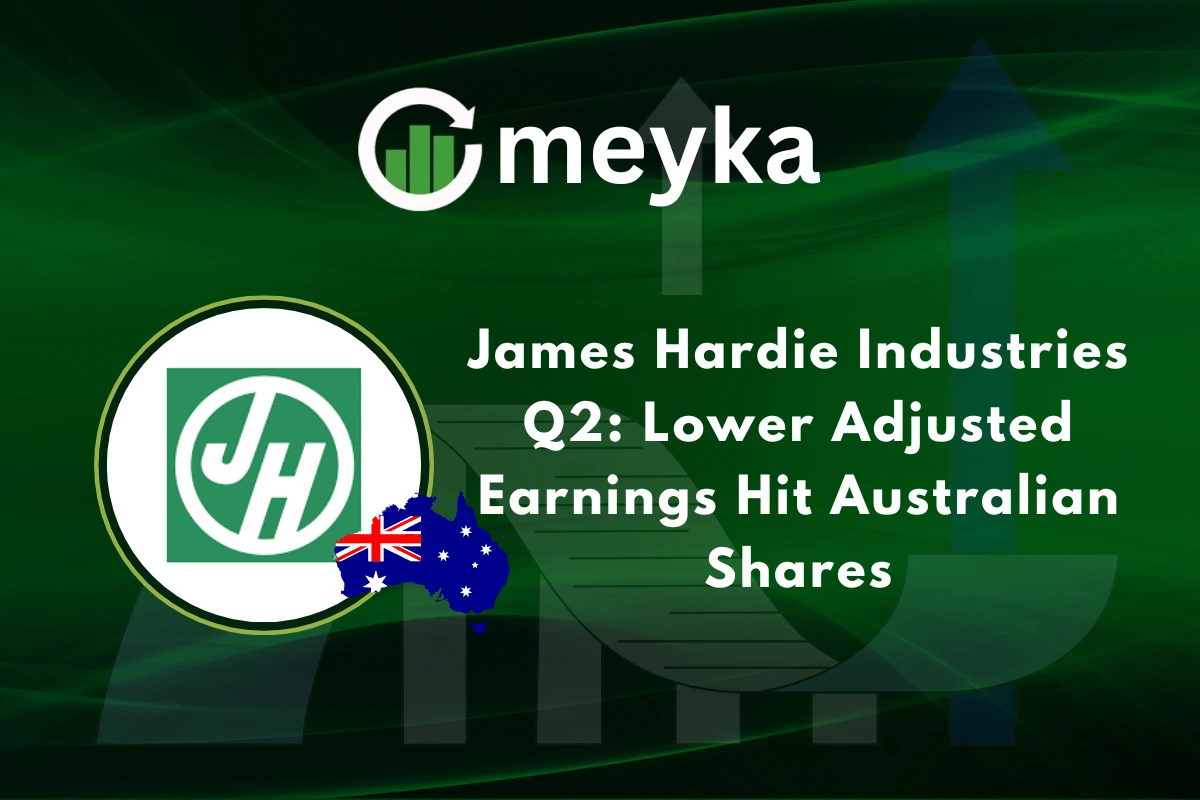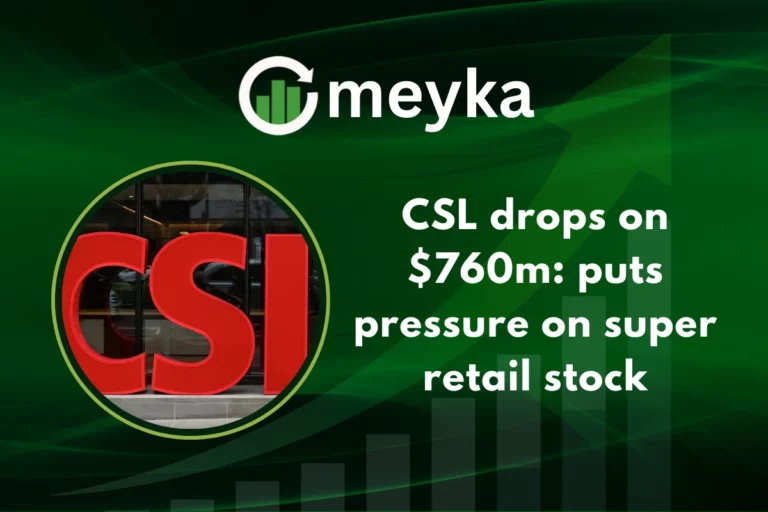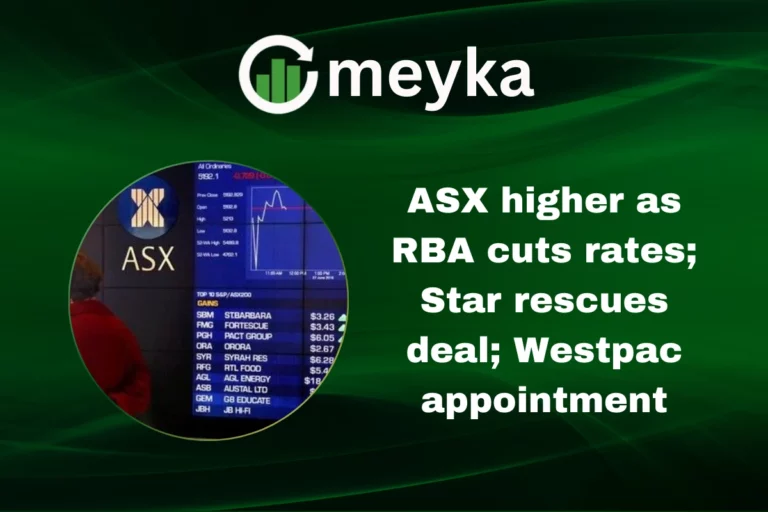James Hardie Industries Q2: Lower Adjusted Earnings Hit Australian Shares
On 30 September 2025, James Hardie Industries plc released its second-quarter results for the fiscal year 2026. The company reported revenue of about US$1.29 billion, showing a strong top-line gain thanks to acquisitions, but the underlying organic net sales actually fell by around 1%.
That mix of growth and weakness brought a sharp reaction from the market, especially on the Australian share market. Investors are now asking: Why did the earnings slip despite rising sales? And what does this signal for the months ahead?
Let’s unpack the results, dig into what’s really driving the drop in profitability, and explore what it means for shareholders and the wider construction-materials industry.
James Hardie Industries Q2 Results: What happened?
James Hardie Industries reported second-quarter fiscal 2026 results for the quarter ended September 30, 2025. Net sales rose to about US$1.29-1.30 billion, a roughly 34% year-on-year increase driven largely by acquisitions. Adjusted EBITDA was reported at about US$329-330 million, but the company swung to a net loss of US$55.8 million for the quarter.
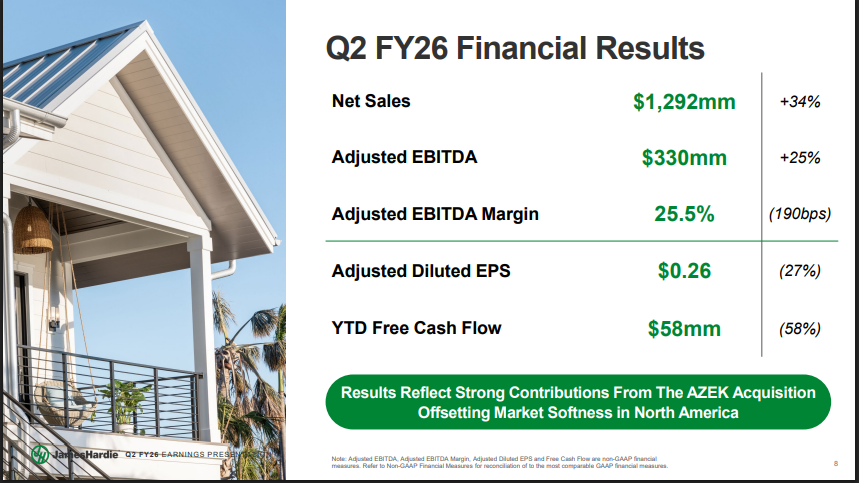
The operating income figure fell sharply to roughly US$24 million. These mixed figures were disclosed in the company’s November 17, 2025, press release and accompanying materials.
Why did Earnings Fall?
A key driver was one-off and acquisition-related costs. Expenses tied to the Azek acquisition and integration weighed on statutory profit. Organic sales were down about 1%, showing soft demand in parts of the business despite the revenue lift from deals.
North America volumes remained under pressure as some homeowners delayed high-cost renovations. Currency moves and higher input costs also squeezed margins. Management pointed to these specific drivers in its commentary.
Impact on James Hardie’s Share Price
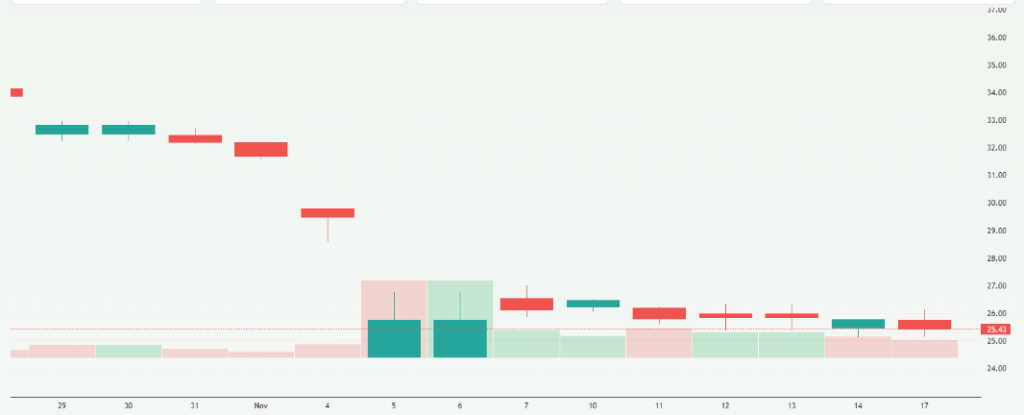
The market reaction was immediate and volatile. Shares have moved sharply in prior months on guidance and governance concerns, including a large sell-off in August tied to weak U.S. housing signals. On November 17-18, 2025, shares responded to the Q2 print and the updated guidance with significant intraday swings across the ASX and NYSE listings. The price moves reflect investor confusion over short-term losses versus longer-term growth targets.
Segment Performance Breakdown
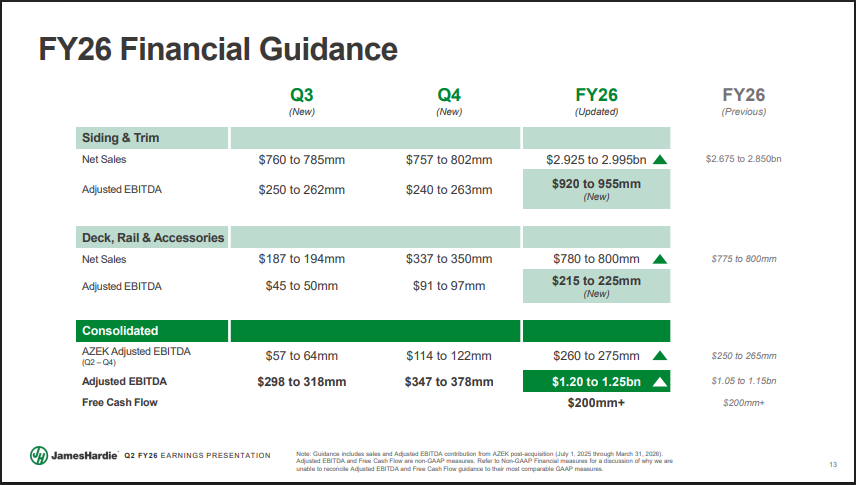
North America’s fiber-cement remains the biggest segment. It delivered mixed volume trends. Management said siding and trim net sales rose, but organic demand in some product lines was muted. The deck, rail, and accessories business showed healthier sell-through and mid-single-digit growth. Asia-Pacific results were more stable but smaller in scale.

The acquisition of Azek boosted consolidated revenue, yet margins in some acquired lines lagged company averages. Slide decks and management remarks provide detailed line-item figures.
Industry and Market Context
The global building materials market is uneven. U.S. residential construction faces headwinds from higher mortgage costs and stretched household budgets. Renovation activity is patchy and often postponed.
In Australia, investor scrutiny and regulatory reviews have amplified volatility for local listings. Competition for exterior cladding is intense. Supply chain constraints eased in some regions, but input inflation remained a marginal headwind during the period. Recent macro data suggest demand may stabilize, but recovery will be gradual.
Management Commentary and Outlook
On November 17, 2025, James Hardie raised its FY26 net-sales and adjusted-EBITDA guidance even while reporting a quarterly net loss. Management emphasized investment in capacity and retaining skilled plant staff to prepare for recovery.
The company also announced executive changes tied to finance leadership. The tone blended caution on near-term volume with confidence in long-term margin expansion. Investors were given a timeline for an analyst call on November 18, 2025, to discuss details.
Investor Reactions & Analyst Opinions
Analysts issued split views. Some upgraded price targets on the stronger consolidated revenue and raised guidance. Others flagged governance concerns and execution risk after the Azek deal and the earlier ASX controversy.
Large Australian institutional holders publicly criticized past governance moves, which added a political dimension to investor sentiment. Short-term analyst notes emphasized watching North America volumes and integration costs.
What does this mean for Investors?
Earnings volatility is likely to persist while integration and demand issues play out. The reported net loss does not erase the company’s long-term ambitions in North America. Key metrics to monitor are organic net sales, adjusted EBITDA margins, and cash conversion in the next two quarters.
Watch guidance updates and any additional one-off charges tied to the Azek integration. For those focused on valuation, the recent dip may create a tactical entry point only if confidence in margin recovery returns. Use fundamental and risk analysis rather than headline moves.
Final Thoughts
James Hardie’s Q2 shows a split story. Revenue growth from strategic deals is clear. Profitability was hit by integration costs and softer organic demand. Near-term results will hinge on North America volumes and how quickly acquisition synergies appear.
Investors should watch quarterly updates and management’s execution of cost control. The next few earnings reports will determine whether this quarter is a temporary setback or the start of a longer earnings reset.
Frequently Asked Questions (FAQs)
James Hardie’s earnings fell in Q2 2025 due to higher costs, integration expenses from the Azek acquisition, weaker organic sales, and currency pressures, as reported on 30 September 2025.
After the Q2 2025 results on 17 November 2025, James Hardie shares saw volatility. Investors reacted to lower profits despite higher revenue, showing uncertainty in the short-term market response.
James Hardie expects revenue growth and margin recovery for FY26. Management plans to integrate acquisitions and control costs, aiming for stronger results in the coming quarters.
Disclaimer: The content shared by Meyka AI PTY LTD is solely for research and informational purposes. Meyka is not a financial advisory service, and the information provided should not be considered investment or trading advice.
